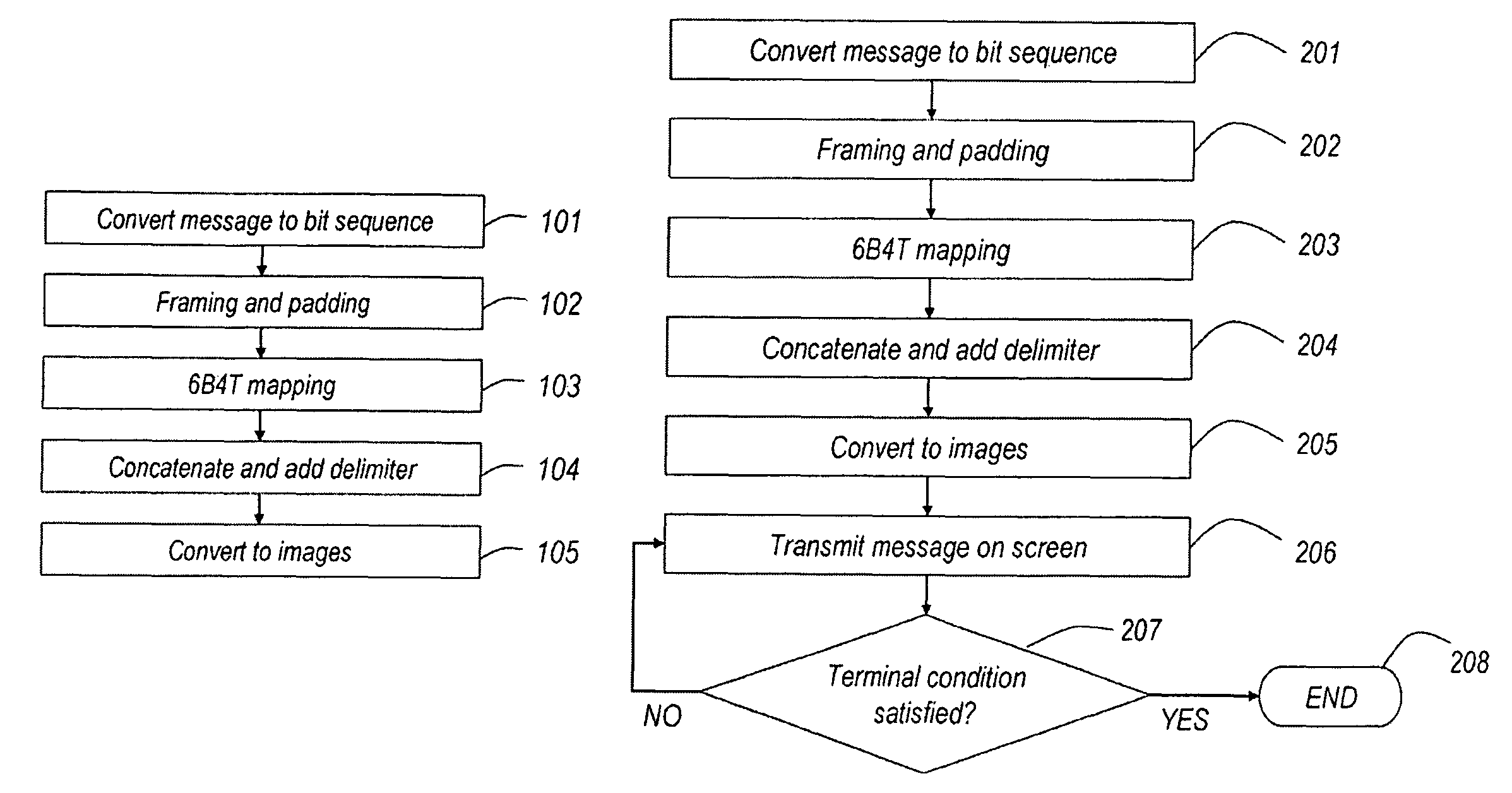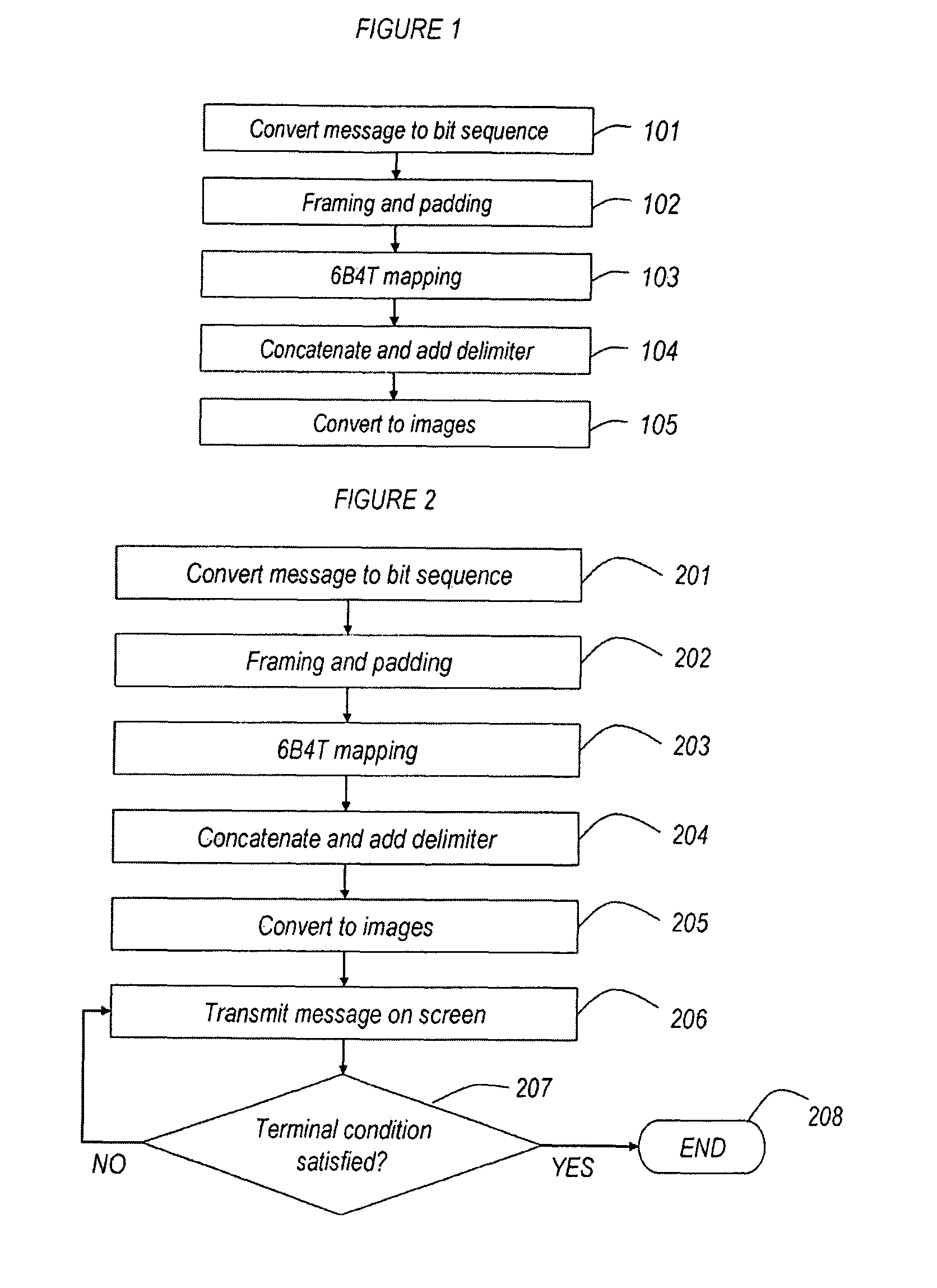Method for transmission of a digital message from a display to a handheld receiver
a handheld receiver and digital message technology, applied in the field of digital message transmission from a display to a handheld receiver, can solve the problems of low light intensity at the receiver, inability to economically support receivers with no other use for such cameras, built-in high-definition digital video cameras, etc., to reduce the total time needed, improve data rate, and reduce the marginal cost of transmitting additional symbols
- Summary
- Abstract
- Description
- Claims
- Application Information
AI Technical Summary
Benefits of technology
Problems solved by technology
Method used
Image
Examples
Embodiment Construction
[0022]It is an object of this invention to provide a source coding scheme that is optimized for transmissions of alphanumerical data containing frequent occurrences of numerals and less frequent occurrences of non-numerical data.
[0023]Alphanumerical messages are typically digitized by means of fixed-length binary codes such as the American Standard Code for Information Interchange (ASCII), which uses seven bits per character, or UNICODE, which uses 16 bits per character. If the statistical prevalence of each character is known for a given language, variable-length encoding schemes can be found that provide a shorter average length for the encoded message. Huffman coding is often used to provide a prefix-free binary code with minimum expected codeword length. The main problems with a Huffman-based approach is that it can only be optimized for a single set of languages with common character statistical properties, and that it produces codewords that can have any length between 1 bit a...
PUM
 Login to View More
Login to View More Abstract
Description
Claims
Application Information
 Login to View More
Login to View More - R&D
- Intellectual Property
- Life Sciences
- Materials
- Tech Scout
- Unparalleled Data Quality
- Higher Quality Content
- 60% Fewer Hallucinations
Browse by: Latest US Patents, China's latest patents, Technical Efficacy Thesaurus, Application Domain, Technology Topic, Popular Technical Reports.
© 2025 PatSnap. All rights reserved.Legal|Privacy policy|Modern Slavery Act Transparency Statement|Sitemap|About US| Contact US: help@patsnap.com



